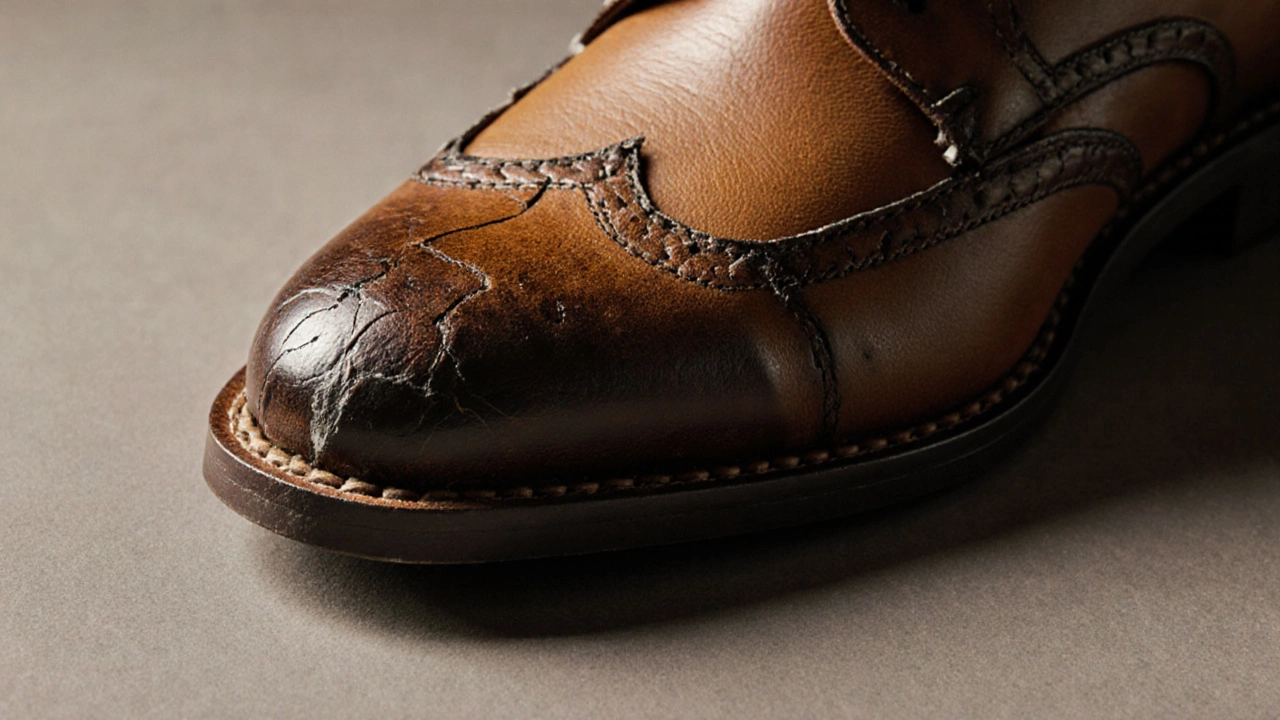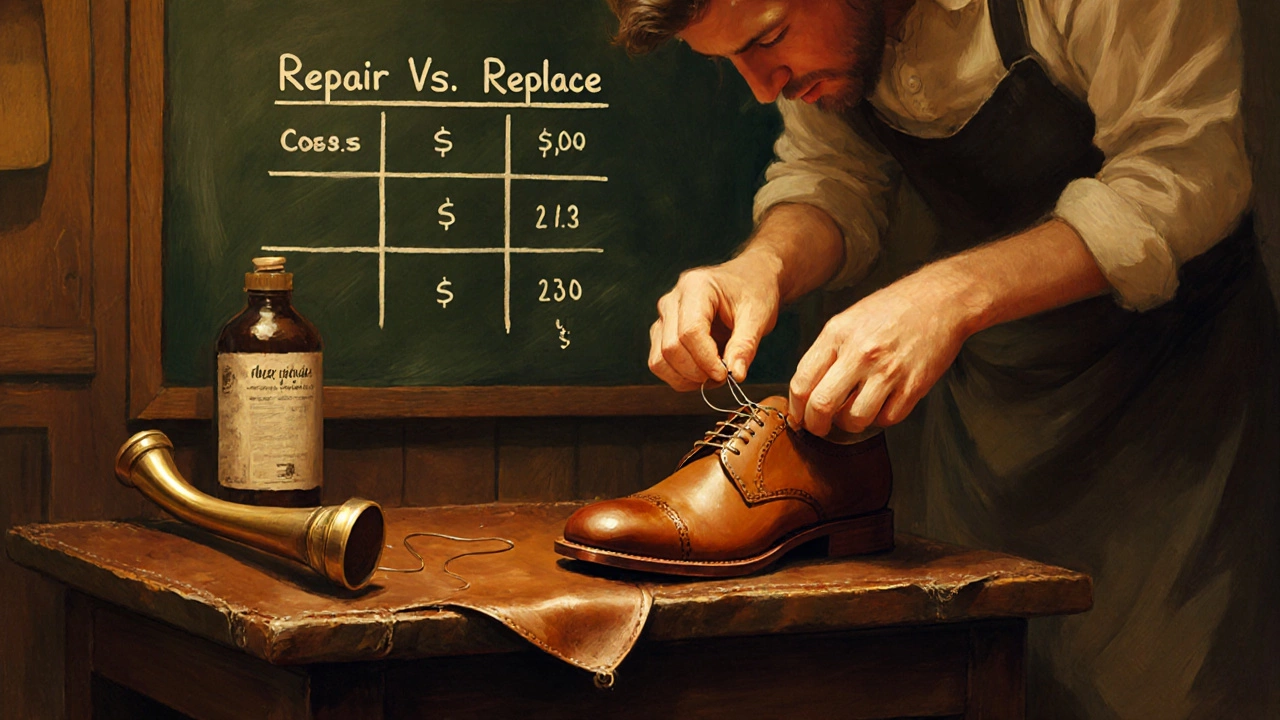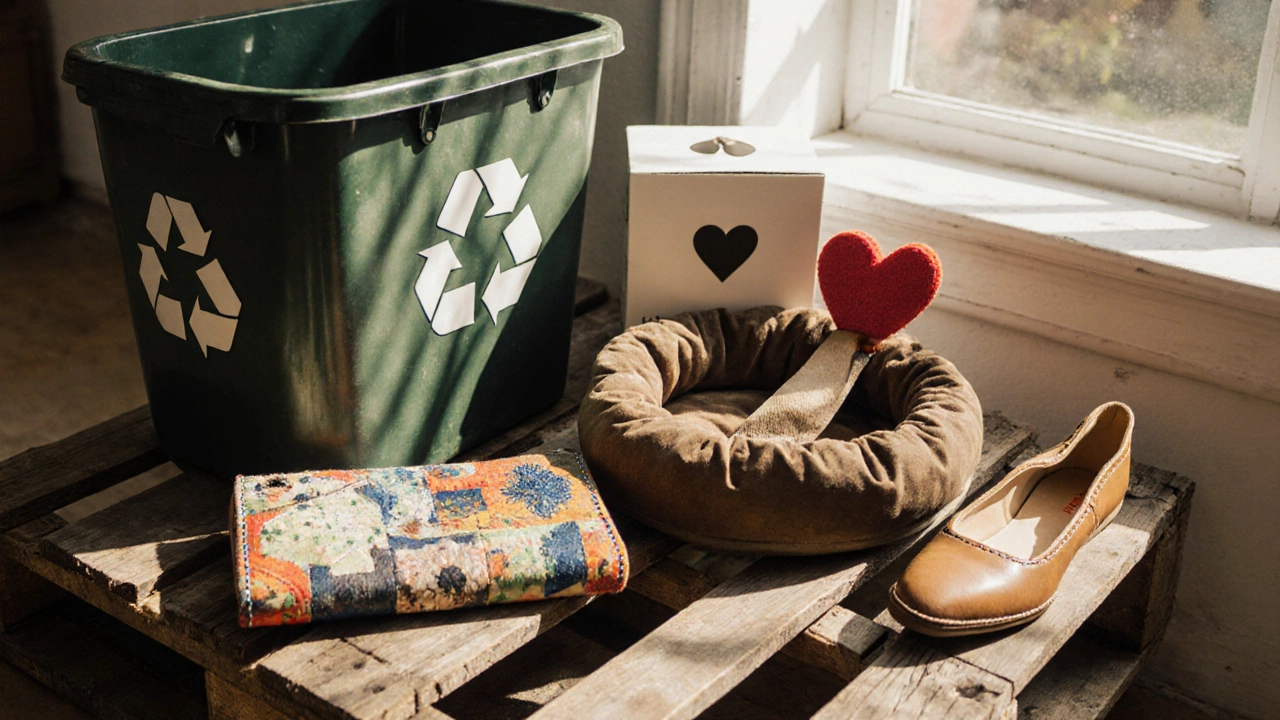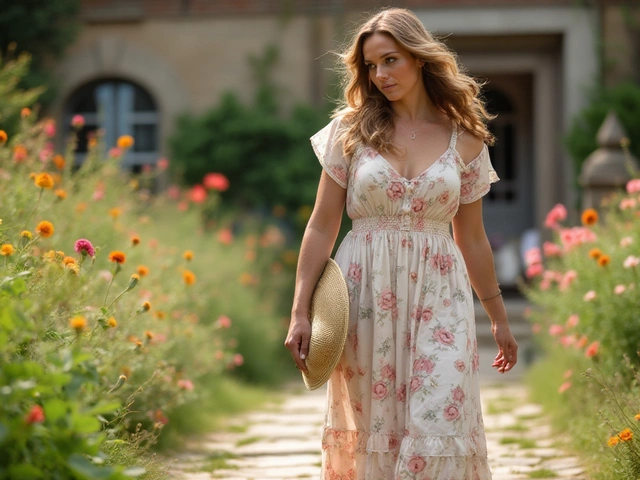How to Know When to Toss Your Leather Shoes

- Cleo Fairchild
- 15 October 2025
- 0 Comments
Leather Shoe Condition Checker
How to Use This Tool
Answer these questions about your shoe's condition. We'll calculate a condition score and show whether repair or replacement is more cost-effective.
Shoe Condition Assessment
Leather feels stiff or doesn't rebound when pressed
Upper pulls away from sole, allowing water entry
Sole is uneven or separating from the upper
Leather is soft, loses shape, or shows mold
Bacteria has penetrated the leather
When it comes to leather shoes footwear crafted from natural animal hide, valued for comfort and style, deciding the right moment to ditch them isn’t always obvious. A pair can look fine at first glance but hide damage that shortens its life or harms the environment once you toss it. This guide walks you through the tell‑tale signs of wear, when to call a cobbler a professional who repairs shoes, how long a good pair should normally last, and the most responsible ways to say goodbye.
Spotting the Red Flags
Even the most diligent shoe lover can miss subtle clues. Keep an eye on these five areas:
- Upper Leather Condition: Cracks, hardening, or the leather feeling stiff indicate that the hide’s natural oils have evaporated. If you press the surface and it doesn’t rebound, it’s a sign of irreversible dehydration.
- Stitching Integrity: Loose or frayed thread can cause the upper to pull away from the sole, leading to gaps where water can seep in.
- Sole Wear: The shoe sole the rubber or leather part that contacts the ground should remain even. Deep pits, excessive thinning, or the sole separating from the upper are strong indicators it’s time for a new pair.
- Moisture Damage: Persistent wetness leaves dark stains and can turn into mold fungal growth that thrives on damp leather. Even after drying, the leather may stay soft and lose shape.
- Odor: A lingering musty smell usually means the leather has absorbed bacteria. No amount of polishing will erase it.
If you notice three or more of these issues, it’s a good moment to start weighing repair versus replacement.
Repair or Replace? A Quick Decision Matrix
Not every flaw warrants a fresh pair. Below is a simple matrix to help you decide whether a quick fix or a full replacement makes more sense.
| Issue | Cost of Professional Repair | Typical Repair Success Rate | Suggested Action |
|---|---|---|---|
| Minor crack in upper | £15‑£30 | High (80‑90%) | Repair |
| Loose stitching | £10‑£20 | High (85‑95%) | Repair |
| Severe sole delamination | £40‑£60 | Medium (50‑70%) | Replace if sole cost > half shoe price |
| Extensive mold damage | £20‑£40 | Low (30‑40%) | Replace |
| Irreversible leather hardening | £25‑£45 | Low (20‑35%) | Replace |
These numbers are based on typical rates from UK cobblers in 2024‑2025. If a repair costs more than half the price of a comparable new pair, lean toward replacement.
Understanding the Typical Lifespan
On average, well‑cared leather shoes last between 3-5years for everyday wear. Several factors shift that range:
- Frequency of use: Wearing the same pair daily accelerates wear.
- Environment: Rainy climates stress the leather’s moisture barrier, while dry heat speeds up cracking.
- Maintenance routine: Regular cleaning, conditioning, and using shoe trees can add a year or two.
For formal leather Oxfords that see occasional use, you might stretch them to 7years with diligent care. Conversely, fashion‑forward boots worn on muddy festivals may need replacement after just 18months.

Extending Life with Simple Care
Before you write off a pair, try these easy steps. They involve a leather conditioner a product that restores oils and flexibility to leather you likely already have.
- Brush off surface dirt with a soft horsehair brush.
- Apply a thin layer of conditioner using a clean cloth; let it sit for 10minutes.
- Buff gently to bring out the natural shine.
- Insert a cedar shoe tree after each wear to preserve shape and absorb residual moisture.
- Store shoes in a breathable cloth bag, not a plastic box.
Even if the pair shows early signs of wear, a regular conditioning schedule can postpone a costly replacement.
Eco‑Friendly Ways to Dispose
When a shoe truly reaches the end of its usable life, throwing it in the trash adds to landfill clutter-a single pair can take decades to decompose. Consider these greener options:
- Donate: Some charities accept gently worn leather shoes for resale, extending the product’s life cycle.
- Recycling programs: Cities like Bristol run shoe‑recycling bins that separate leather from metal eyelets and send them to specialized facilities.
- Upcycle: Creative DIY‑ers turn old leather into wallets, pet beds, or even art pieces.
If you choose a recycling service, ask whether they process leather by breaking it down into granules for new products rather than incinerating it.

When to Say “Good‑Bye”
Summing up, you should retire your leather shoes when any of these conditions are met:
- Multiple high‑severity issues appear in the decision matrix.
- The repair cost exceeds 50% of a comparable new pair.
- Persistent mold, odor, or structural failure makes the shoes unsafe or uncomfortable.
- You’ve exhausted sustainable disposal routes and the shoes are beyond repair.
By following the signs, you’ll avoid waste, protect your feet, and keep your wardrobe looking sharp.
Frequently Asked Questions
How often should I condition my leather shoes?
For everyday wear, conditioning every 6‑8weeks works well. If you live in a dry climate, add an extra session every 3months to prevent cracking.
Can I repair a cracked leather upper myself?
Minor cracks can be filled with a leather repair kit, but the result is usually less durable than a professional repair. For structural cracks, a cobbler’s stitching is recommended.
What’s the best way to remove mold from leather?
First, brush off any surface spores outdoors. Then wipe the leather with a solution of equal parts water and white vinegar, let it dry completely, and finish with a conditioner to restore moisture.
Are there recycling schemes for leather shoes in the UK?
Yes. Many local councils, including Bristol City Council, operate shoe‑recycling bins that send leather to specialist facilities. Check your council’s website for collection points.
How much should I expect to pay for a professional sole replacement?
A typical sole replacement for a standard leather shoe costs between £40 and £60, depending on the sole material and the cobbler’s rates.


